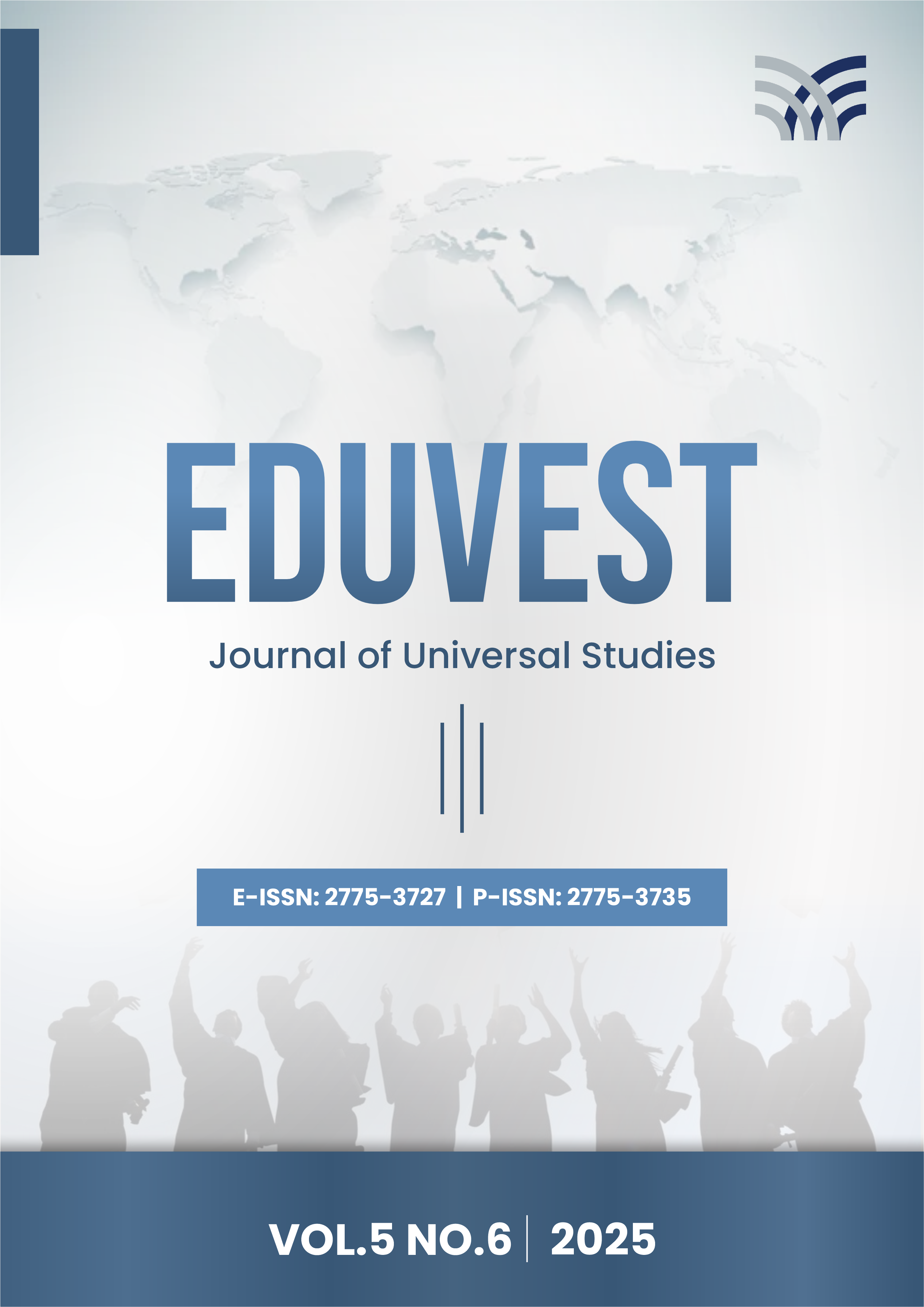The Role of Organizational Culture in Driving Knowledge Management and Reducing Customer Complaints: A PLS-Sem Study at PT Xyz
DOI:
https://doi.org/10.59188/eduvest.v5i6.51215Keywords:
Organizational Culture, Knowledge Management, Key Performance Indicator (KPI), System Incentives, Customer ComplaintsAbstract
High rates of unresolved customer complaints and the absence of structured Key Performance Indicators (KPI) and transparent incentives present significant challenges for PT XYZ, a telecommunications company. These issues undermine employee motivation, operational efficiency, and customer satisfaction, ultimately threatening the company’s profitability and competitive positioning. This study analyzes how Organizational Culture influences Knowledge Management, impacting KPI, System Incentives, and Customer Complaints in a telecommunications company. Using the Partial Least Squares Structural Equation Modeling (PLS-SEM) approach, the findings reveal that Organizational Culture significantly enhances Knowledge Management, which serves as a critical mediator in driving organizational effectiveness. The study highlights the strong and significant relationships between Knowledge Management and internal processes, such as KPI and incentive systems, as well as its moderate impact on reducing customer complaints. The results confirm the mediating role of Knowledge Management in linking Organizational Culture to both operational efficiency and customer satisfaction. These findings emphasize the importance of fostering a strong organizational culture to support knowledge-sharing practices, enabling companies to achieve their strategic goals. Future research could expand on these findings by exploring additional mediating variables or applying the model to other industries.
References
Aguinis, H. (2013). Performance management. Pearson Education.
Al-Ali, A. A., Singh, S. K., Al-Nahyan, M., & Al-Ali, A. (2020). Organizational culture and organizational performance: A proposed framework for the public sector of the UAE. International Journal of Productivity and Performance Management.
Bohlander, G. W., & Snell, S. (2023). Managing human resources. Cengage Learning.
Chin, W., & Marcoulides, G. (1998). The Partial Least Squares Approach to Structural Equation Modeling. Modern Methods for Business Research, 8.
DeNisi, A. S., & Murphy, K. R. (2017). Performance appraisal and performance management (10th, Ed.). Routledge.
Fornell, C., & Larcker, D. F. (1981). Evaluating structural equation models with unobservable variables and measurement error. Journal of Marketing Research, 18(1), 39–50. https://doi.org/10.2307/3151312
Grajek, M., Gugler, K., Kretschmer, T., & Mişcişin, I. (2019). Static or Dynamic Efficiency: Horizontal Merger Effects in the Wireless Telecommunications Industry. Review of Industrial Organization, 55(3). https://doi.org/10.1007/s11151-019-09723-4
Hair, J. F. Jr., Howard, M. C., & Nitzl, C. (2020). Assessing measurement model quality in PLS-SEM using confirmatory composite analysis. Journal of Business Research, 109, 101–110. https://doi.org/doi.org/10.1016/j.jbusres.2019.11.069
Hair, J. F., Ringle, C. M., & Sarstedt, M. (2011). PLS-SEM: Indeed a Silver Bullet. Journal of Marketing Theory and Practice, 19(2), 139–151.
Hair, J., Sarstedt, M., Hopkins, L., & Kuppelwieser, V. (2014). Partial Least Squares Structural Equation Modeling (PLS-SEM): An Emerging Tool for Business Research. European Business Review, 26, 106–121. https://doi.org/10.1108/EBR-10-2013-0128
Henry, T. F., Mest, D. P., & Safar, M. L. (2019). Pirate Wireless: Revenue Recognition in the Telecommunications Industry. Accounting Perspectives, 18(1). https://doi.org/10.1111/1911-3838.12167
Keiningham, T. L., Aksoy, L., Bruce, H. L., Dube, L., & Rooney, J. A. (2021). Customer experience driven business model innovation. J Bus Res, 132, 813–822.
Lam, L., Nguyen, P., Le, N., & Tran, K. (2021). The relation among organizational culture, knowledge management, and innovation capability: Its implication for open innovation. Journal of Open Innovation: Technology, Market, and Complexity, 7(1), 1–16. https://doi.org/10.3390/joitmc7010066
Malik, A., Nawaz, T., Khan, F., & Ul Abdin, Z. (2021). Impact of digital transformation on telecommunication industry. International Journal of Engineering Business Management, 13, 18479790211039544.
McKinsey. (2025). Transforming telecom tech: How IT excellence drives innovation and cost efficiency. https://www.mckinsey.com/industries/technology-media-and-telecommunications/our-insights/transforming-telecom-tech-how-it-excellence-drives-innovation-and-cost-efficiency
Mozer, M. C., Wolniewicz, R., Grimes, D. B., Johnson, E., & Kaushansky, H. (2000). Predicting subscriber dissatisfaction and improving retention in the wireless telecommunications industry. IEEE Transactions on Neural Networks, 11(3). https://doi.org/10.1109/72.846740
Peters, C. (2022). National Sovereignty, Global Policy, and the Liberalization of Telecommunications Markets. Internet Diplomacy: Shaping the Global Politics of Cyberspace, 161.
Z, P. T. X. Y. (2024). Internal Report 2024.
Downloads
Published
How to Cite
Issue
Section
License
Copyright (c) 2025 Rizki Kurniawan, Aji Baskoro, Dana Indra Sensuse, Sofian Lusa, Nadya Safitri

This work is licensed under a Creative Commons Attribution-ShareAlike 4.0 International License.











